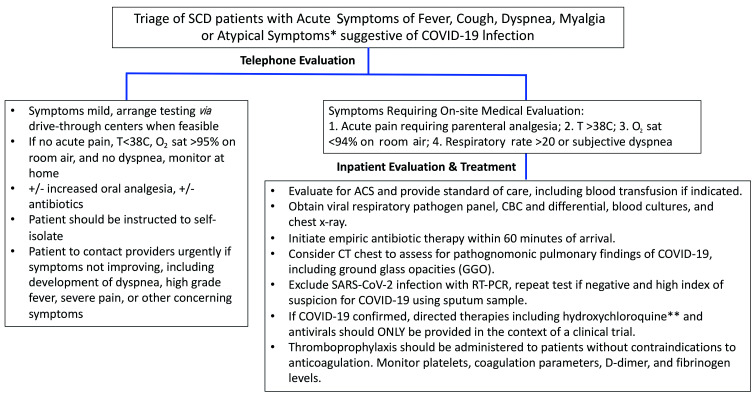Figure 1.
Triage of managing individuals with Sickle cell disease in the COVID-19 pandemic. *Loss of smell (anosmia) and taste (ageusia) and change in taste (dysgeusia) are emerging symptoms. GI symptoms (diarrhea, nausea, vomiting) with or without respiratory symptoms are reported in significant number of COVID-19 patients. **There has been conflicting evidence regarding the utility of antimalarial agents such as hydroxychloroquine17 and the decision to utilize such therapy should take into account potential adverse effects such as ventricular arrythmias and QT prolongation common pre-existing conditions in SCD patients. Importantly, a large majority of Sickle cell disease (SCD) patients are of African descent and are at risk of drug-induced hemolysis due to concomitant G6PD deficiency. Use of hydroxychloroquine has also been associated with significant methemoglobinemia in case reports.18With the current lack of evidence on associated risks and complications, registries to capture global information on COVID-19 SCD cases have been established: https://covidsicklecell.org/http://eurobloodnet.eu/news/99/covid-19-infection-and-redblood- cell-disorders. The sickle cell community can also obtain guidance on the management of individuals with SCD on the ASH website: https://www.hematology.org/covid-19/covid-19-and-sickle-cell-disease. ACS: acute coronary syndrome; CBC: complete blood count; CT: computed tomography.

